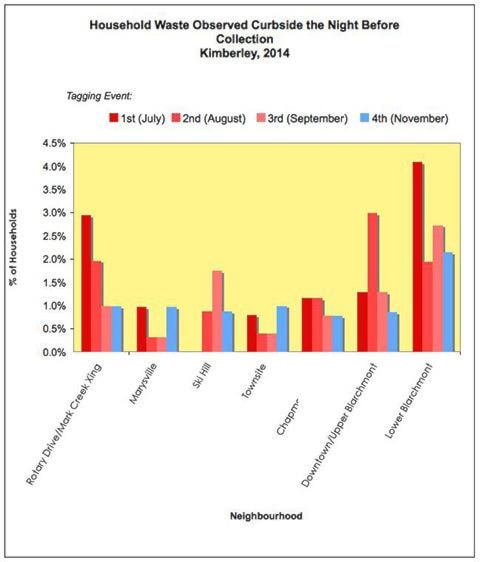A key component identified by the Kimberley Urban Deer Committee was education, and this past spring, summer and fall, students of all ages received some education on urban wildlife.
The younger grades were spoken to by an educator contracted directly by the City and older grades had visits from Sonja Seher of WildSafe BC.
This was the first season the WildSafe BC program was delivered in Kimberley. It was funded by money that City had set aside for a deer cull. When Council voted last year to forego a cull because deer were a provincial responsibility, it was decided resources should go to education.
The WildSafe BC program was delivered in both Kimberley and Cranbrook with education being a strong focus.
The program pulls together the former Bear Aware information on bears and garbage as well as dealing with encounters with urban deer.
In her report, Seher noted that while Kimberley calls to the conservation Officer Service Reporting line remained consistent with 2013, calls in Cranbrook were up 83 per cent.
In addition to speaking to students, Seher spoke to interest groups, brought displays to various community events and did door-to-door outreach in neighbourhoods experiencing conflicts with wildlife.
Over the course of the 2014 season, WildSafeBC conducted a series of garbage tagging events in Kimberley. During these events, the Community Coordinator identified and tagged household waste left on the curb or back alley overnight.
“Though some neighbourhoods showed improvements over the course of the season, we still have a long ways to go in Kimberley to ensure that our household waste does not become a wildlife attractant,” Seher said.
“Garbage is the number one attractant for bears in our community and our province. It’s not just bears that are attracted to the strong aroma of household waste. Garbage cans placed out overnight also attract deer, raccoons, scavenger birds, and domestic animals as well. By waiting until the morning of collection before you place your waste container to the street, you restrict the window of opportunity for wildlife to find and access a food reward in your driveway or alley.
“Don’t let the dipping temperatures and snow affect your diligence with regards to waste management in your home. By ensuring secure waste storage and good collection day practices year-round, you won’t be caught off guard in the spring when the bears again become active.
“By managing our household waste responsibly we can all help to keep wildlife wild, and our community safe.”
Kimberley City Council agreed that the program appeared to be a success in its inaugural year.
